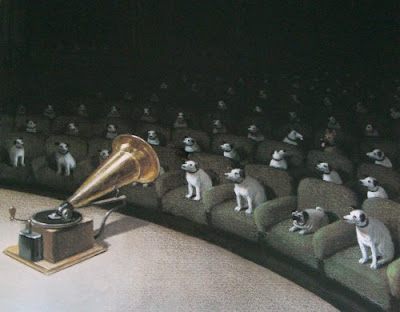Time for classical music to awaken the inner analogue?
Benjamin Britten's 'holy triangle' of composer, performer and listener is bound together together by the glue of sound. Such was the importance of sound to Britten that he built one of the world's acoustically finest concert halls and condemned the loudspeaker as the principal enemy of music. Yet today the glue of sound has become increasingly fissile as mobile and digital technologies heap sonic compromise on sonic compromise. But thankfully the art of great recorded sound is not quite dead, as is proved by a new CD from Nimbus Alliance titled The Art of Transcription*. The quality of the music - Dmitry Sitkovetsky's transcriptions for string trio of Bach's Goldberg Variations and Sinfonias - and the quality of the performances - by Yuri Zhislin, Luigi Piovano and Sitkovetsky himself - are both outstanding. But equally outstanding is the quality of the sound in a recording produced by former EMI staffer John Fraser and engineered by Philip Hobbs at Potton Hall here in East Anglia. All too often today the demands of concert recordings and simultaneous video recording force the production team to place the microphones close to the performers, which robs the sound of vital spacial information and atmosphere. But John Fraser and Philip Hobbs wisely avoid the curse of close-miking, and the result is sound that transports the listener from the constrained set and setting of domestic listening to a seat in the converted timber-framed barn at Potton Hall.
The Art of Transcription is digital recording at its very best, and digital technology has always been seen as an opportunity, not a problem, for classical music. But is that assumption true? In fact it can be argued that digital sound is contributing to the disconnect between classical music and young audiences. Hazrat Inayat Khan taught how all life-giving energies - including music - are no more than vibrations. Yet digital recordings deconstruct and reconstruct those fragile vibrations with scant regard for their integrity. Yes, it is a miracle that technology can perform the sonic equivalent of turning pigs into sausages, and then turning the sausages back into pigs. But is it surprising that the resulting digital porkers don't quite sound like the real thing?** Those searching for new audiences would do well to study Glenn Gould's all-analogue 1955 Goldberg Variations. It sold more than forty thousand copies in its first four years in the catalogue and more than one hundred thousand during Gould's lifetime - all without the aid of iPods and social media. Whereas today a digital album is a best seller if it shifts less than a quarter of that volume across both disc and MP3 formats. Vinyl is making a big comeback with young rock fans. Time for classical music to awaken the inner analogue?
* It is a measure of the power of Dmitry Sitkovetsky's Goldberg disc, seen above, that it survives a negative al-Kindī effect. How many impulse buyers will reach home before realising they have not bought the Planets or Also sprach Zarathustra? Which is why I opted for an alternative header image.
** Challenges to the sonic veracity of digital recordings should not be dismissed as fuzzy science. The digital recording and reproduction process hinges around the Nyquist–Shannon sampling theorem which states that perfect reconstruction of a signal is possible when the sampling frequency is greater than twice the maximum frequency of the sampled signal. As the upper limit of human hearing is approximately 20 kHZ the sampling rate for CD and MP3 digital encoding/decoding was fixed at 44.1 kHz. Yet even an untrained listener can hear the difference in an A/B comparison between a CD sampled at 44.1 kHz and a studio master sampled at 192 kHz. If the Nyquist–Shannon sampling theorem is correct, 44.1 kHz sampling will have perfectly reconstructed the original signal. Yet listening tests show conclusively that the higher sampling rate improves on "perfection". Or, in simple language, what we hear actually hear contradicts the theorem that digital recording technology is built on. When it is understood that there is no sampling in analogue recordings - which makes the effective sampling rate infinite - the sonic appeal of vinyl becomes less urban myth and more fact. Let the comments begin...
Also on Facebook and Twitter. The Art of Transcription was a requested review sample. Any copyrighted material on these pages is included as "fair use", for the purpose of study, review or critical analysis only, and will be removed at the request of copyright owner(s). Report broken links, missing images and errors to - overgrownpath at hotmail dot co dot uk











Comments
http://www.rightmove.co.uk/property-for-sale/property-18407145.html
http://www.bbc.co.uk/news/technology-16382648
You can't go backward. New materials in both production and reproduction will have to be used if analogue is going to become a viable medium.
Start there and you have an argument. the rest is just noise.